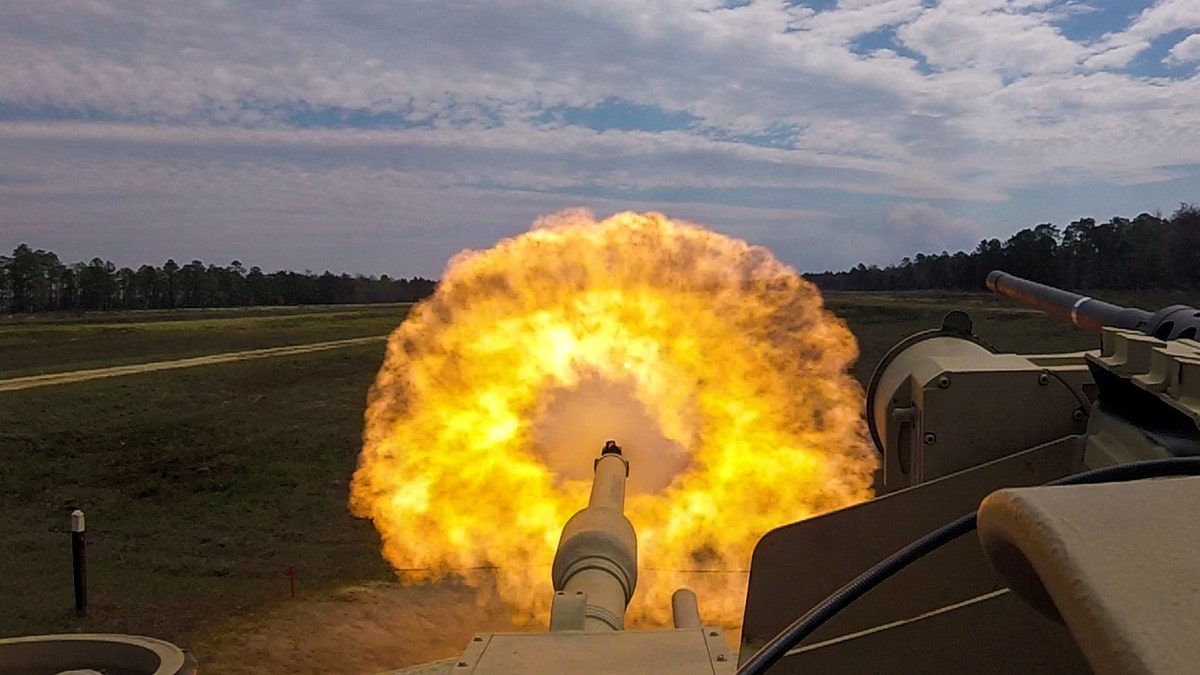Fox News Flash top headlines for August 3
Fox News Flash top headlines are here. Check out what's clicking on Foxnews.com.
Imagine an armored vehicle takes enemy fire and is disabled, crew members are injured, when all of a sudden its armor regenerates.
Perhaps a drone is conducting surveillance while operating in a forward, high-risk combat area when it is nearly decimated by enemy explosions, yet its biologically-inspired polymer material instantly self-heals.
Further, what if a soldier’s body armor is damaged by enemy attacks during close-quarter urban combat, placing his or her life in immediate danger, but the armored plates quickly regenerate and keep the soldier alive?
SOLDIERS USE AI TO FIRE PRECISION GRENADES, GUIDE DRONE ATTACKS
While not here yet, these kinds of Hollywood-sounding warfare scenarios are not entirely beyond the realm of the possible, given cutting edge research now funded by the Army Research Office and conducted by Penn State University and Max Planck Institute for Intelligent Systems.
Scientists are discovering new ways of replicating, mirroring or approximating protein-based polymer materials inspired by biology. The materials are beginning to show some of the actual properties known to characterize biologically-based polymers, such as self-healing.
“Biologically-based materials, created through research, could be used in future robotics, prosthetics or maybe serve as a component of a composite material used in protective applications. If something was dropped or damaged, you would not need to take the time to replace it, you could self-heal the damage and get the device back in the field,” Dr. Stephanie McElhinny, program manager, Army Research Office, an element of the U.S. Army Combat Capabilities Development Command’s Army Research Laboratory, told The National Interest in an interview.

File photo - Troopers with the U.S. Army 2nd Armored Brigade Combat Team, 3rd Infantry Division fire the main gun round at a target during unit gunnery practice with newly acquired M1A1-SA Abrams tanks at Fort Stewart, Georgia, U.S. March 29, 2018. Picture taken March 29, 2018. (U.S. Army/Handout via REUTERS) (U.S. Army/Handout via REUTERS)
The plan, ultimately, is to potentially merge these polymers with other substances to form new composite materials able to exhibit these kinds of natural or biologically inspired self-healing properties. While these composites have not yet been created, Army scientists are making progress with initial efforts to engineer these kinds of biologically-inspired polymer materials based on the amino acids that construct protein polymer-like substances.
McElhinny detailed an elaborate, yet promising scientific process, which includes designing a biologically based DNA recipe or sequence to create proteins to obtain the desired properties. While the materials are synthetically made, they are inspired by self-healing properties, McElhinny explained to TNI.
ARMY SOLDIERS USE 'MACBOOK'-SIZED TABLET TO OPERATE MULTIPLE SMALL DRONES
“Sequences are designed on a computer and then inserted into a bacterial strain to produce polymers. These drive into a powder and that can be processed into different materials,” McElhinny said.
Such progress introduces a new scientific frontier with potentially promising combat applications. It is an example of one of many ongoing Army Research Office projects intended to serve what could be called a two-fold process. The service wants to both harvest some scientific progress for near-term combat, while also advancing what’s called basic research intended to manifest years down the road.
CLICK HERE TO GET THE FOX NEWS APP
To draw from what could be called an overhyped sci-fi possibility, some might at least wonder if something like this could someday make something like Hollywood’s “Terminator” a reality.

